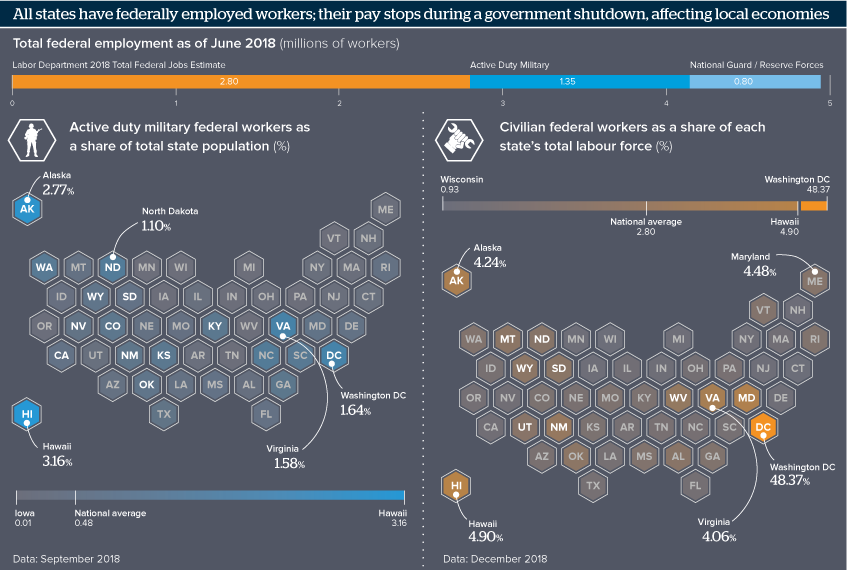US states are vulnerable to more government shutdowns
The longest federal government shutdown has just ended, but others are likely when deep policy disagreements arise
Source: US Census (2010); US Department of Labor -- Bureau of Labor Statistics; Governing Magazine
Outlook
After President Donald Trump signed a continuing resolution spending bill on January 25, the longest-ever US federal government shutdown (at 35 days) ended. This shutdown was caused by inter-party disagreements over immigration reform and border security (particularly Trump’s wish for funds to be appropriated to build a US-Mexico border wall).
However, shutdowns can occur over conceivably any deep policy disagreement. When they do, some or all federal workers are not paid, though some are still required to work. A fully or partially shut federal government therefore means economic damage locally, and a halt to important government policy programmes and implementation.
Impacts
- Absent a border security compromise or continuing resolution to fund the government, another shutdown will happen on February 15.
- Repeated shutdowns, especially long ones, will undermine the attractiveness of working for the federal government.
- States with the most federal workers proportionally will suffer the most economically during shutdowns.
- The party that gets blamed for a shutdown will risk losing swing voters, but could deepen its support among core voters.
- Congress may legislate to prevent shutdowns, but any laws limiting presidential powers would likely be vetoed.
See also
- Fears of third Trump-era US government shutdown rising - Jun 12, 2020
- Prospects for US politics in 2020 - Nov 5, 2019
- Prospects for US politics to end-2019 - Jun 6, 2019
- US missile 'defence' may prove to be the opposite - May 3, 2019
- US 2020 budget fight is coming, with shutdown possible - Mar 11, 2019
- US shutdown deal by February 15 is possible - Jan 29, 2019
- More graphic analysis
